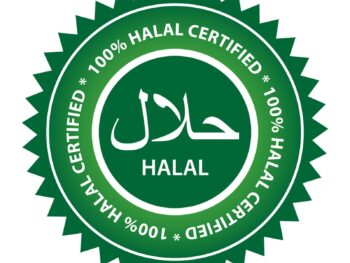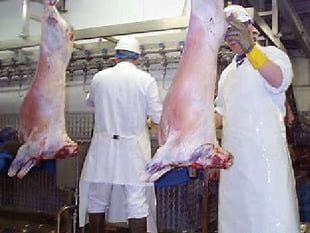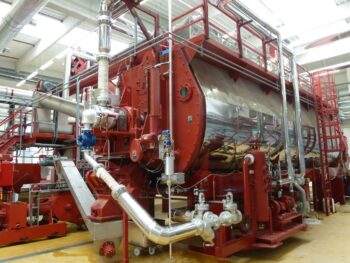A Practical Guide for Upcoming African Abattoir Managers
Unlocking Value: A Region-Specific Guide for South Africa and Africa
If you run — or plan to run — an abattoir in South Africa or anywhere across the African continent, you have faced the classic question: “Do we debone, or stick to bone-in sales?”
Across the continent, the choice to debone is more than just a technical step in meat processing—it is a strategic business move shaped by the realities of local economics, customer preferences, and resource constraints. While abattoirs in developed markets often use standardized deboning processes, African operations encounter specific challenges and opportunities, including variations in livestock supply, changes in consumer preferences, and infrastructure limitations. Each operational decision plays a role in outcomes.
To understand whether deboning will truly benefit your operation, you need to weigh not only the direct costs and returns but also the broader context: What do your customers want? What can your staff deliver, given their skills and your available equipment? How can you minimize waste and transform by-products into revenue streams? The answer depends on how well the business model matches the requirements of the region, suppliers, and buyers.
The promise of deboning is enticing higher per-kilo prices, more versatile products, and extra cash streams from the same carcass. But deboning brings its own set of challenges: labor, training, capital investment, compliance, hygiene, and yield management.
This guide provides information for African abattoir managers interested in making decisions based on data and current market trends. We will break down the real profit levers of deboning, how to maximize ROI per carcass, what products to make and how to sell them, plus the essential tools and strategies for safe, efficient operations — all rooted in the realities of the African context.
So how do you decide? Begin with a clear-eyed assessment of your own context. Map out your current throughput, labor skill levels, and the mix of customers you serve — each with their own demands for bone-in or boneless products. Weigh the upfront investment in boning equipment and staff training against the potential uplift in sales and new product lines. For many African abattoirs, the value lies not just in selling premium boneless cuts
but in efficiently channeling every by-product: bones for pet food, trim for mince, and offal for specialized markets.
It is rarely an all-or-nothing proposition. Many successful operations start small, deboning key Primal's for higher-end or urban buyers, while maintaining bone-in options for traditional customers. Tracking yields and costs from the outset is essential — not just kilograms in and out, but the actual costs of labor, shrinkage, energy, and compliance. Over time, data-driven abattoirs can fine-tune their product mix, expand into value-added goods, and build a resilient business able to flex with market shifts and livestock cycles.
Select the right mix of bone-in and boneless products for your actual local demand.
Smart operators track not only gross margins but also the opportunity cost of bone-in versus boneless sales. Are you maximizing the use of each primal? Can you up-value what would be waste into profitable items like mince or dog bones? And, crucially, can you adapt your product range to suit fluctuating seasonal demand — or the unique preferences of a township butchery versus an urban supermarket?
When executed with discipline, deboning opens doors: value-added products, new customers, and a buffer against volatile livestock prices. But this opportunity is realized only with an eye on detail and a firm grip on the numbers.• Convert trim and bones into value-added items (not just waste).
• Control labor, hygiene, and cold-chain costs in the boning room.
Deboning moves value into boneless, closely trimmed cuts and portion-controlled steaks, while providing raw material for mince, sausages, cured goods, and ready-to-cook lines. But all this pays off only when you run the room efficiently and sell every stream.
Understanding the African Abattoir Context
Africa’s red meat industry is diverse, spanning informal township butcheries, village markets, supermarkets, game lodges, and export buyers. Each market segment comes with its own preferences, price sensitivity, and regulatory landscape.
• Diverse Markets: Townships, urban supermarkets, street vendors, hospitality, and export markets all want different cuts and specs.
• Cold-chain limitations: Inconsistent refrigeration challenges shelf-life and storage planning.
• Labor & Skills: Trained Deboners are scarce — investing in training is critical to keep yields and specs on target.Livestock Variation: Breed, feed, and management practices vary widely, affecting meat yield and cut value.
Export Potential: Complying with halal and international food safety standards is key to unlocking premium export markets.
Every one of these factors shapes whether deboning is right for your plant.
What Deboning Really Changes (and What It Does Not)
- Cutting Yield vs. Edible Yield: While deboning decreases the carcass cutting yield due to bone removal, the quantity of consumable meat available to the consumer remains unaffected. Profit comes from selling meat in more valuable forms, not from magically increasing the meat itself.
- Pricing Power & Product Mix: Boneless, portion-controlled cuts command higher prices per kg than bone-in primals — especially in supermarkets, hotels, and export markets. With the right specs, you can access food service and retail programs that demand consistency and traceability.
- Room Efficiency: The boning room’s layout, workflow, and trim standards have a direct impact on cost per carcass and saleable yield. For example, conveyor tables (vs. traditional individual tables) can cut labor and facility costs by up to 12% (USDA study), and standardized trim protocols boost margin on every cut.
- Deboning Method: Hot, warm, or cold deboning each have pros and cons. Hot boning can save chill time and space — but only if you have tight temperature and hygiene control to avoid spoilage or safety risks.
- By-Products: Bones, trimming, and offal are not waste. Bones are used for broth or pet food; trim becomes mince, sausages, or patties; fat is rendered into tallow. Mechanically harvested meat from bones can add up to 45% yield on some streams if there’s market demand.
- Bones become broth or pet food; trimmings are turned into mince, sausages, or patties; fat is rendered for tallow.
The Profit Model: How Deboning Pays
Deboning can boost profit via four main levels:
• Price Uplift on Boneless Cuts: Selling portion-controlled, spec’d boneless cuts (vs. bone-in) attracts higher prices.
• All trimmings, bone, and offal are processed into products such as mince, sausage, biltong, broth, or pet food.
• Reduced Freight/Pack Weight: No bone means you pay less to ship the same edible meat.
• Meat Recovery from Bones: Mechanically recovered meat and monetization of by-products add new income streams.
But these gains come with costs: extra labor, skills, PPE, sanitation, cold-room energy, packaging, QA/traceability, and greater spoilage risk if the process is poorly managed.
ROI Tips for African Abattoirs
Optimize Cutting Specs and Information Flow
• Standardize trim levels and cut thickness for each market segment.
• Track yield variances by batch and cutter to spot training or process issues.
• Use in-room scales and yield/grade data to guide cut decisions (e.g., which parts go to mince vs. roast, based on fat content and demand).
• Convert trim into mince (80/20, 90/10), wors, patties, or meatballs based on local preference.
• Sell bones for broth, soup packs, or pet-food raw material.
• Harvest additional meat from bones using low-pressure meat recovery systems (if scale allows) to supply nuggets or formed products.
Choose the Right Deboning Strategy for Your Scale
• For small abattoirs: hand deboning with basic stainless tables and equipment is often best.
• Larger plants: invest in conveyor or semi-automated boning lines to reduce labor cost per carcass.
• Consider hot or warm boning only if you can guarantee rapid cooling and strict sanitation — the risk of spoilage is real if you cut corners.
Match Products to Market Demand
- Retail: Mixed family packs, portion steaks, stew meat, and mince for supermarkets and butcheries.
- Food service: Vacuum-packed, portioned steaks and roasts for hotels and restaurants.
- Direct-to-Consumer: Meat boxes, frozen ready meals, bone broth bundles, pet-owner packs.
- By-Products: Offal and bones for local cuisine, broth producers, ethnic grocers, or pet-food companies.
Always align your product mix with what your customers buy, not just what you can produce.




